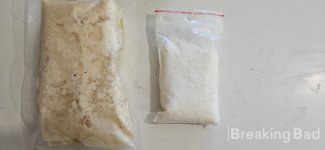Hello. I tried to do these synthesis, i got it done only on the third try, but with extremely small yield. From 10g of P2NP only ~0,5 of amphetamine phosphate.
Here are some possible reasons:
1. When I add a solution (10p2np, 100 ipa, 50 glacial acid) to amalgam, reaction begins immediately, and very intense. I cool it (without overcooling) and after this the reaction continues for about 4-5 minutes (with active release of heat) after which it begins to slowly subside, I tried to start it again using hot water, but the reaction does not start again, it slowly subsides. Please tell me if I made any mistake at this stage.
2. I also noticed a strange thing at the alkali stage. (I used a pipe cleaner that only listed sodium hydroxide). I added gradually (literally drop by drop), after I added half and started stirring, the solution became like wet gray sand, I already thought that everything was ruined again, and I added the remaining half and suddenly the mixture became liquid again. after which a transparent cloudy layer with a volume of 2.5 ml formed on top of it. I removed the top layer with a syringe, placed it in a separate container and ordered a 1:9 solution of isopropyl alcohol and 85% orthophosphate acid. The mass began to gather in white lumps, and at first it seemed that there were 3-4 grams, but after drying it turned out that there were 0.5 grams. What could I have done wrong? I would be very grateful for your help.

